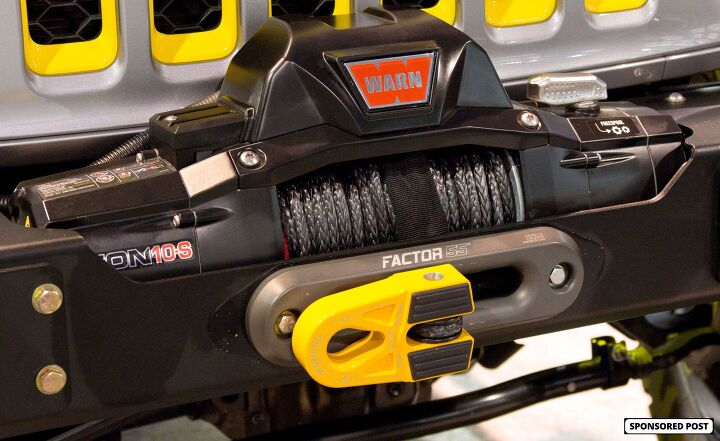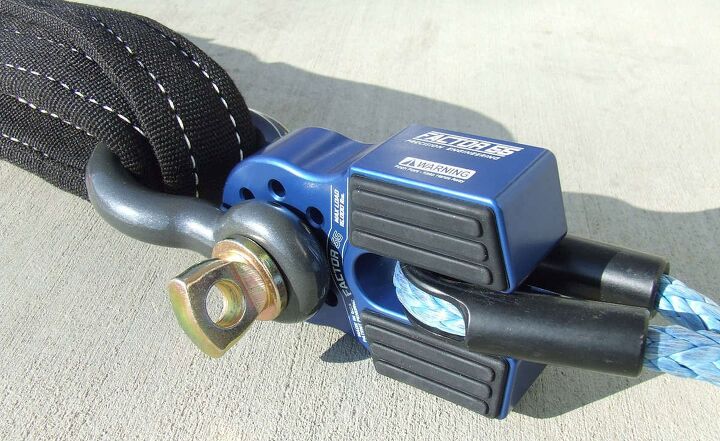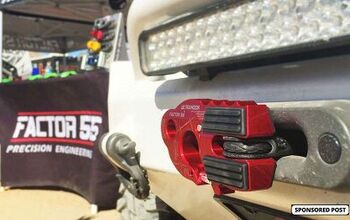Why Factor 55's Closed System Winching is Safer
If you are an experienced off-roader, you have likely used a winch more than a few times. If you have vast experience pulling yourself or others out of sticky situations, you have likely had a traditional winch hook slip and cause an even bigger problem. The little safety latch that holds a rope or cable in place will help in some situations, but that piece is not load bearing, so if the line shifts, that little latch quickly breaks. When that happens, you can suddenly lose your load, but this can be prevented with a closed system winching set up from Factor 55.
While closed system winching might sound elaborate to someone who has never worked with these components, switching to a closed system is as simple as replacing the traditional hook with one of a few different designs with solid connection points at both ends. In this article, we will take a look at why Factor 55’s closed system winch products are a better option.
What is Closed System Winching?
As you probably know, the key functional components of an average winch are the drum, the cable or rope and the hook. There is an electric motor that turns the drum, allowing you to extend or retract the cable, while the hook connects the rope to a stationary object or another vehicle. While the hook that comes with most winch kits has a little safety latch on it that is intended to keep the hook in place. In the simplest conditions, that latch will hold the hook in place, but by just looking at it, you can tell that the latch isn’t intended to carry the same loads as the hook itself.
The latch is a piece of soft metal that is really just there to keep the hook from falling away when there is slack in the line. If your load shifts while winching someone out of a tough spot and the force hits that latch, the line or shackle will quickly rip through and your load will be free. This creates a series of dangers, with the vehicles suddenly being free of the opposing forces while the winch hook goes flying through the air.
Fortunately, that can be solved by replacing your standard winch hook with one of the various closed system options. Factor 55 is a leader in American-made, highly engineered and tested closed system winching solutions, offering each of the key designs along with the accompanying components needed for safe winching in every condition.
Flat-Resting Shackle Mount
The standard open hook that comes with your winch rests flat against the fairlead when not in use, but it often rattles against the metal, so off-roaders will often connect the winch hook to a tow hook when it isn’t being used. That creates something else to collect debris or get hung up on things in the wilderness along with adding extra wear and tear to your winch rope or cable.
Factor 55 offers the FlatLink and the FlatLink E for those off-roaders who want to make use of the closed system design with a low profile mounting solution. These flat hook systems are constructed of 6061 billet aluminum, with a titanium connection pin on the winch side and a hole on the other end that accepts shackles or took hooks, depending on the item chosen. The FlatLink is designed to work specifically with hard or soft shackles while the FlatLink E will also work with factory-mounted tow hooks on vehicles like the Jeep Wrangler or Ram 1500.
When not in use, the FlatLink closed system winch connectors rest flat against the fairlead, with rubber pads that prevent rattling or metal-to-metal scuffing.
ProLink Shackle Mount
If you want a beefier aftermarket winch connection that can continue to carry a D-ring or shackle when not in use, an item like the Factor 55 ProLink is a great option. The company’s original winch line shackle mount, ProLink accepts your winch cable or rope eyelet through the base, fastening it in place with a titanium pin. Once the cable is connected, a rubber boot fits over the base to provide cushion where it rests against the fairlead. This prevents rattling or scuffing, but when the ProLink is against the fairlead, the perpendicular orientation to the bumper allows you to leave a shackle or D-ring in for easy hook-up on the trail.
The only downside to this style of winch hardware is that it sticks out a bit from the front of the vehicle, effectively reducing approach angle by a small amount.
Combination Shackle Mount and Hook
While closed system winching is markedly safer than using an open hook, there are situations where the hook – or something with an open end – is needed. That is where a combination setup like the Factor 55 UltraHook proves to be perfect.
This unit features a flat design, so it will rest flat against the fairlead when not in use, with a hole for closed system winching that will accept hard or soft shackles. What makes this design unique is the integrated hook, complete with a safety latch similar to the standard open-style winch hook. With this design, you can use the closed system for heavier jobs while lighter, quicker jobs can be handled with the hook. It should be noted that the UltraHook’s clasp can be locked into place using a pin stowed in the hook’s body. This even makes the hook end a true closed loop system.
Bottom Line
The key downsides to a standard, open-style winch hook are safety concerns, aesthetics and sound. We have already talked about the safety concerns being the biggest problem, but a traditional hook can quickly become annoying. If you leave it hanging against the fairlead, it will likely knock against the bumper and make noise, especially when you are off-roading. Also, since standard winch hooks are usually designed with function before form, they are generally comprised of dissimilar metals that tarnish at different rates, so after a year in the elements, they look terrible.
If your off-road vehicle has hit a few trees and rolled a time or two, you likely don’t care how it looks, but you don’t want to listen to your winch hook knocking on your bumper every few feet. If you do have a nice looking off-road rig, a color-matched, billet aluminum closed system winch shackle mount looks worlds better than a plain old hook while cutting down on noise and being safer when in use.
Visit Factor55.com to learn more.
*This article is sponsored by Factor 55
Patrick Rall has been covering the automotive industry for over a decade, but was born into car culture. Having grown up in his father's performance shop, he spent extensive time at the track, driving and wrenching on various types of vehicles.
More by Patrick Rall




































Comments
Join the conversation